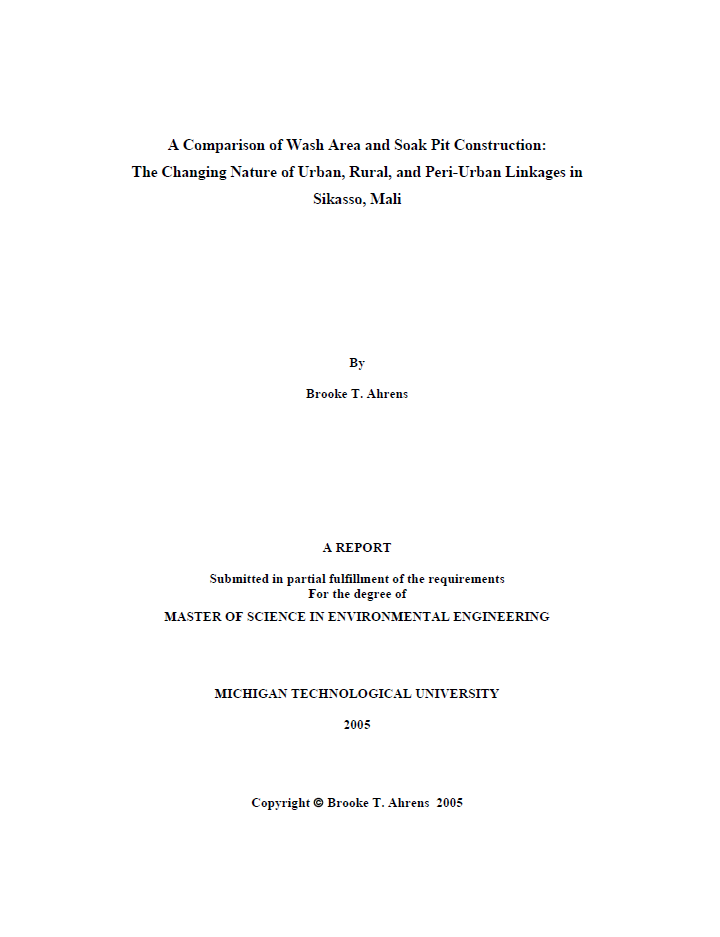A Comparison of Wash Area and Soak Pit Construction The Changing Nature of Urban, Rural, and Peri-Urban Linkages in Sikasso, Mali Ahrens, B. (2005)
In this report, the relationship between geographic location, project implementation process, and ten factors were analyzed. In the urban case study, major influential factors included the presence of aid money, education, and concentration of pollution. The greater part of the urban project is carried out by the policy makers, indicating a “topdown” approach to development. In the rural case study, the major influential factors were the presence of aid money, decentralization, and the mobility of people. In contrast, the beneficiaries take the larger role of project facilitation in a more “bottom-up” method. Like the rural setting, the peri-urban case study also indicated a “bottom-up” approach to work affected by factors, such as ownership of property, the standards and costs of living, and education. In addition to policy makers, private sector, and beneficiary roles and relationships, manual of practice and funding is also discussed in the context of implementation of sanitation engineering projects.
Bibliographic information
Ahrens, B. (2005). A Comparison of Wash Area and Soak Pit Construction The Changing Nature of Urban, Rural, and Peri-Urban Linkages in Sikasso, Mali Peace Corps, US.
Filter / Tags
OtherPeri-urbanCase studies in other formatsEnglish

